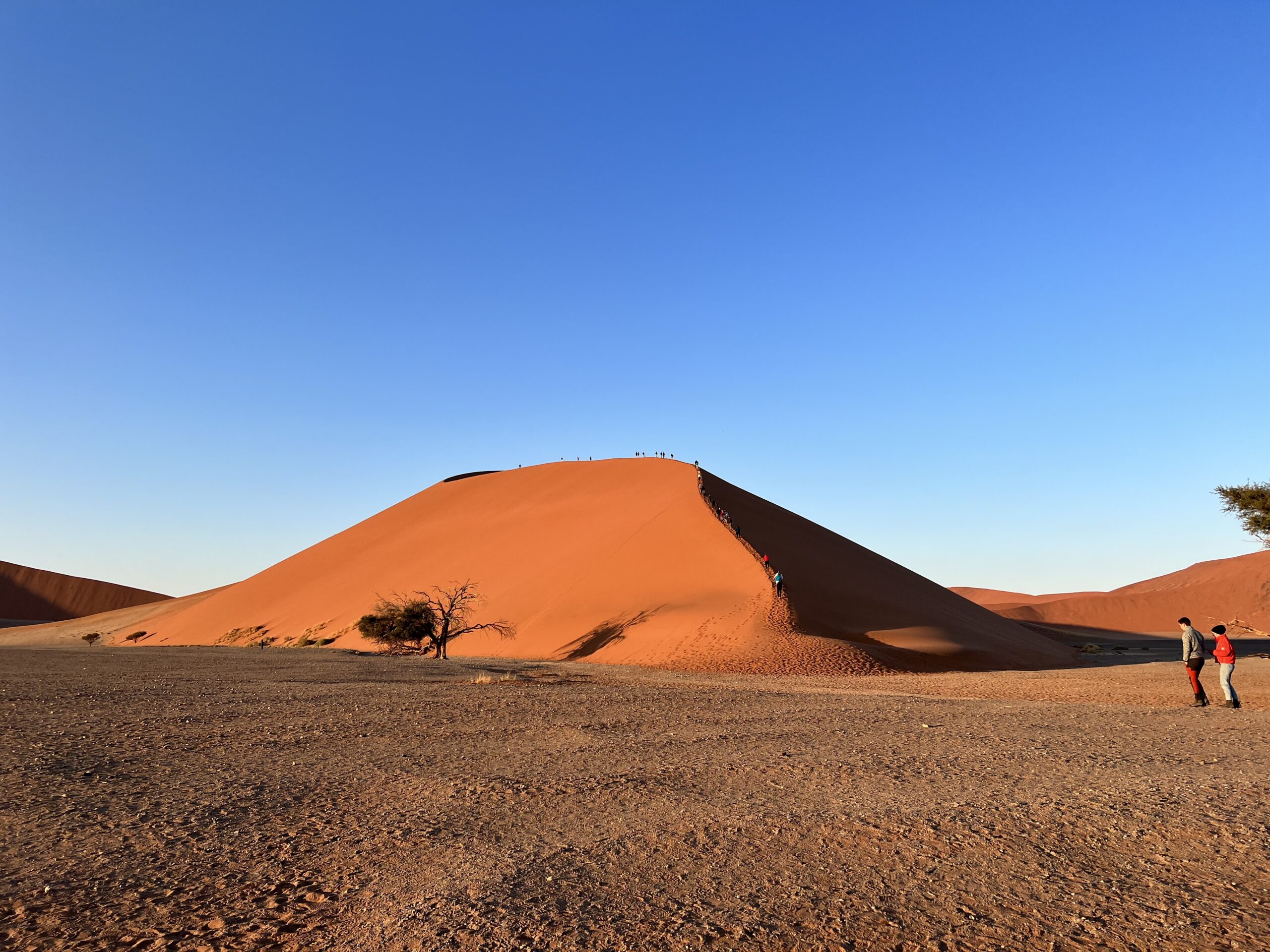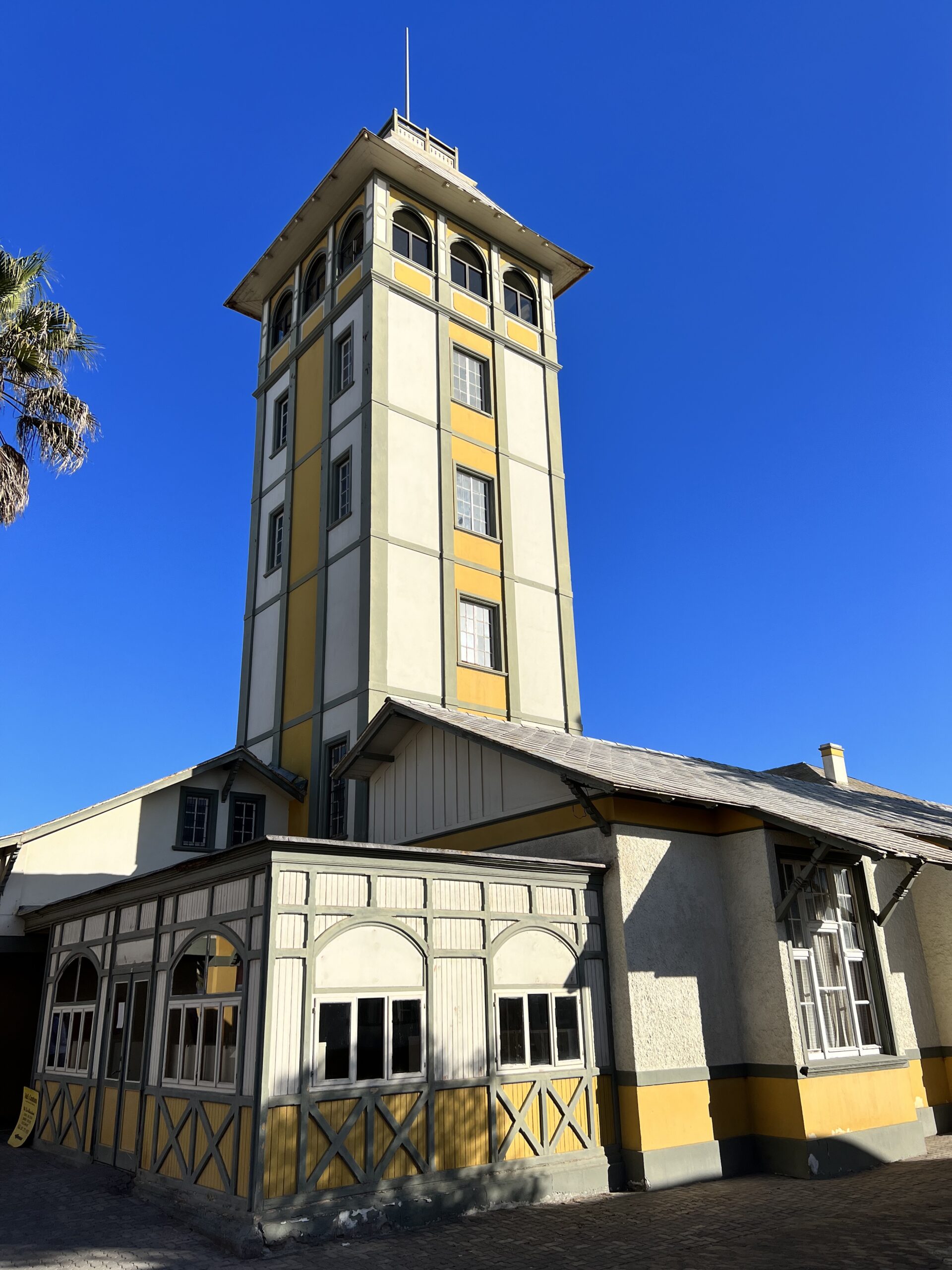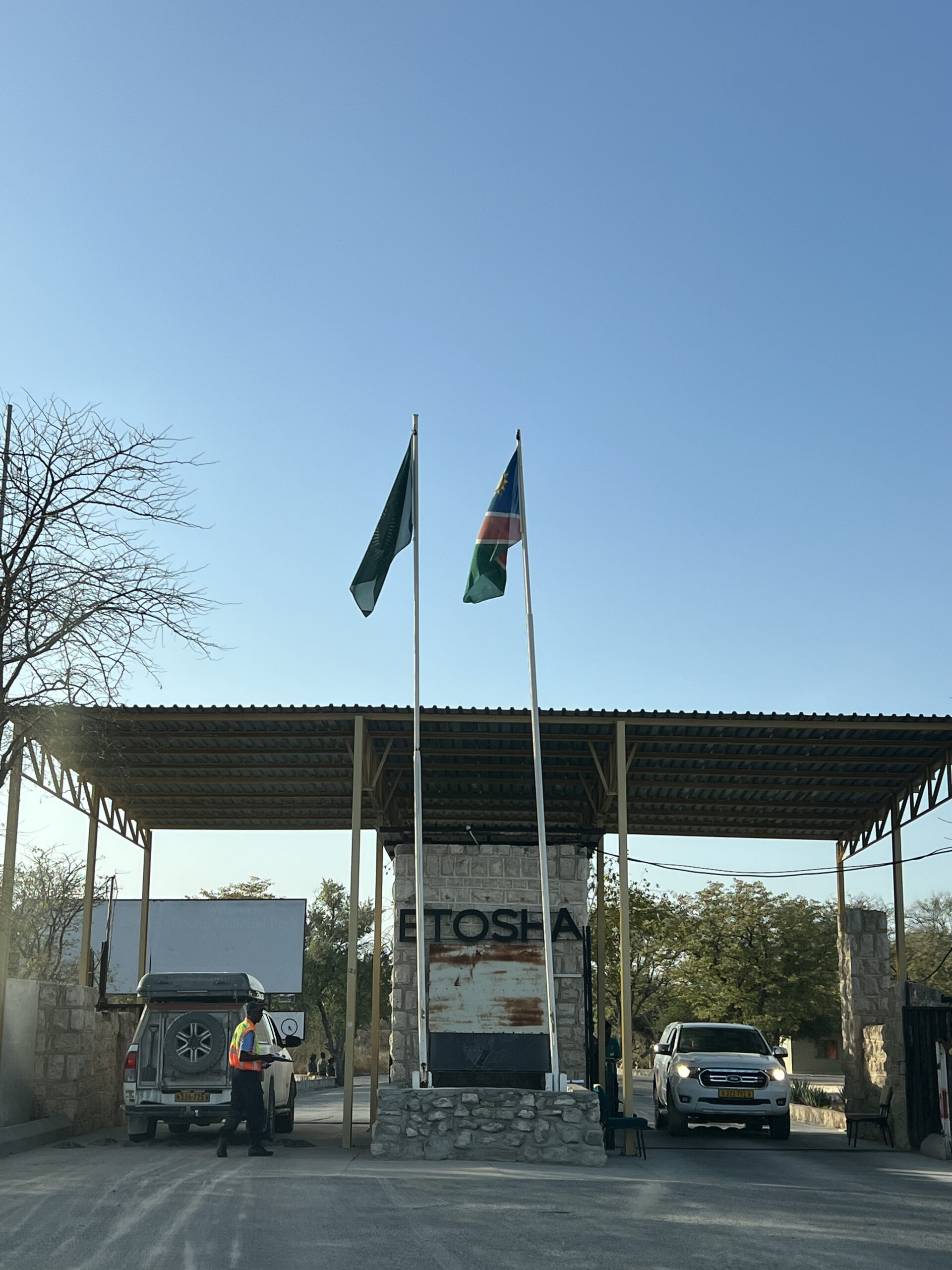
From the scorched beauty of the skeleton coast to the abundant wildlife of Etosha National Park, in Namibia you’ll find adventure and beauty everywhere you look. If you’re seeking an unforgettable safari adventure, this is the place for you, but Namibia isn’t just about the wildlife. From cruising sand dunes to checking out indigenous villages and exploring ghost towns, this remarkable country rewards the curious traveller.

Day 1
Arrival in Windhoek. Check out some of the local sights in the capital, such as Christuskirche, National museum and Independence museum. Windhoek is a modern, well-groomed city where office workers lounge around Zoo Park at lunchtime, tourists funnel through Post St Mall admiring curios and taxis whizz around honking at potential customers. Neobaroque cathedral spires, as well as a few seemingly misplaced German castles, punctuate the skyline, and complement the steel-and-glass high-rises.
Stay: Windhoek Hilton

Day 2-3
Onwards to Sosussvlei, a large ephemeral pan, is set amid red sand dunes that tower up to 325m above the valley floor. It rarely contains any water, but when the Tsauchab River has gathered enough volume and momentum to push beyond the thirsty plains to the sand sea, it’s completely transformed. The normally cracked dry mud gives way to an ethereal blue-green lake, surrounded by greenery and attended by aquatic birdlife, as well as the usual sand-loving gemsboks, and ostriches.
Overnight at Desert Camp, where we opted for the self-catering unit. We bought some food supplies from the supermarket in Windhoek, and rented a catering set from the guesthouse. The chalet comes equipped with a simple kitchen with stove, kettle and sink. Overnight, we forgot to cover the dustbin and the next morning, found that some desert animals had turned over the dustbin in search of food.
In the morning, we had a simple breaskfast before heading up to climb the sand dunes. The most iconic one is Dune 45, which rewarded us with breathtaking views of the surrounding landscape at the top. Going down was fun, as some people just dashed their way down through the soft sand, while others took off their shoes to appreciate the sand in their toes.
Then we proceeded to the actual Sosussvlei and Deadvlei, surrounded by Big Daddy and Momma Dunes. At the end of the 65km 2WD road from Sesriem is the 2WD car park; only 4WDs can drive the last 4km into the Sossusvlei Pan itself. Visitors with lesser vehicles park at the 2WD car park and walk, hitch or catch the shuttle to cover the remaining distance.
After our desert tour, we drove 5 hours in the afternoon to reach Walvis Bay, which was dark by the time we had arrived.
Stay: Protea Hotel Walvis Bay Pelican Bay (2 nights)
Day 4
Drive to Swakopmund, which is half an hour way. It is an adventurer’s paradise, but unfortunately we did not have time to try out the activities, such as kayaking, quad biking or sandboarding. We managed to see a huge flock of flamingoes around the lagoon area, easily accessibly by car which is 5 minutes from our hotel. Swakopmund is steeped in German colonial culture, from its cuisine to striking architectural landmarks like the Woermannhaus and the Kaiserliches Bezirksgericht. Travelers come to soak up the atmosphere and to take part in activities that range from sandboarding to skydiving.

Cape Cross Seal Reserve, which is another 2 hours up north from Swakopmund. The best-known breeding colony of Cape fur seals along the Namib coast is in this reserve, where the population has grown large and fat by taking advantage of the rich concentrations of fish in the cold Benguela Current. The sight of more than 100,000 seals basking on the beach and frolicking in the surf is impressive to behold, though you’re going to have to deal with overwhelming piles of stinky seal poo. Bring a handkerchief or bandana to cover your nose or be brave like us, we managed to resist the stench and had so much fun taking many photos of the seal colony.

Sandwich Harbour, 56km south of Walvis Bay in Dorob National Park, is one of the most dramatic sights in Namibia – dunes up to 100m-high plunge into the Atlantic, which washes into the picturesque lagoon. The harbour is now deserted and a stirring wilderness devoid of any human settlement. Birdwatchers will have a field day and Sandwich Harbour 4×4 facilitate half- and full-day trips down here.

Day 5-7
Saving the best of Namibia for last, we drove towards Etosha National Park. Along the way, we stopped by the San Bushmen Living Museum for a one hour guided tour. The locals taught us how they made fire and also showed us their way of life. The men were mainly seen outdoors, while women and children were out of sight. There was an outdoor store selling handicrafts too. We learn some of their language and gawp at their skills and crafts as they educate us on how to survive and thrive in harsh desert conditions.

Finally, we arrive at Andersson Gate which is the entrance to Etosha National Park, around 6pm. The gates close at sunset, so we were lucky to be able to make it in time and then it was another 20 minutes drive across some tarred road to reach our camp- Okakuejo Camp.
Stay: Okaukuejo Camp Double Room A

Etosha National Park is indeed a photographer and wildlife enthusiast’s haven. It was fun spotting wild animals on our mini self-drives and on the safari tours. If you do not feel like driving, you can book a tour with the safari camp, which does morning, afternoon and evening game drives. Just note that morning and evening drives can get chilly, so do pack some warm clothes as the safari vehicle is open-air, so the wind flows freely.
Besides Okakuejo Camp which is highly recommended, we also recommend staying at Halali Camp. Due to the popularity of these camp resorts which are managed by Namibia Wildlife Resorts, you would have to book like 3-6 months in advance. From basic camping facilities to double rooms to luxury suites, there is a range of accommodation to suit everyone’s needs.

The best time for game viewing is during the dry season where the animals will need to go to the waterholes to drink and the bushes are less lush so it’s easier to spot them. In Namibia, the dry season is in winter and runs from May till October but the peak season is between July and October. In the evenings, the floodlit waterholes at the safari camps are the best places for wildlife viewing.
After staying in Etosha National Park, we stayed the second night at a private reserve – Etosha Village. It is a 5 minutes drive from the park gate. From there, we visited the Himba tribe village Omapaha, before driving back to Windhoek, which takes another 4 hours. The Himba village is an ethnic encounter to the original Himba Village where you will learn more about their culture & traditions.

Day 8
Flight out of Namibia. We caught a morning flight from Windhoek to Cape Town.

Why visit Namibia?
Few countries, if any, can claim limitless horizons, stark landscapes, harsh environs and untamed wilderness, complemented by rare beauty, great scenery, a pleasant climate, few people, a beautiful coastline, one of Africa’s greatest game parks and, the world’s oldest desert…Welcome to Namibia! It is also a child-friendly destination as we saw many young families who did a self-drive in the country and the safari is something that will enthral the children.
Although Namibia isn’t considered a ‘big five’ destination, Etosha National Park, with Etosha meaning ‘Place of Mirages’, is one of Africa’s best game reserves. A vast shallow silvery-sand bowl and surrounding bush offer amazing game density where animals amass around limited water resources.


